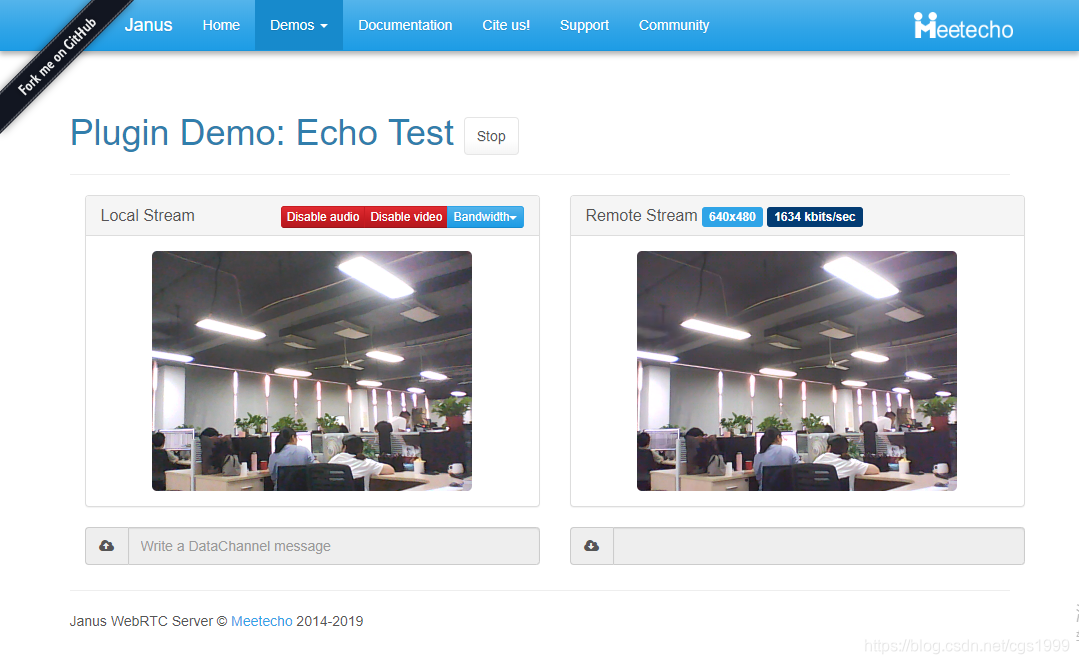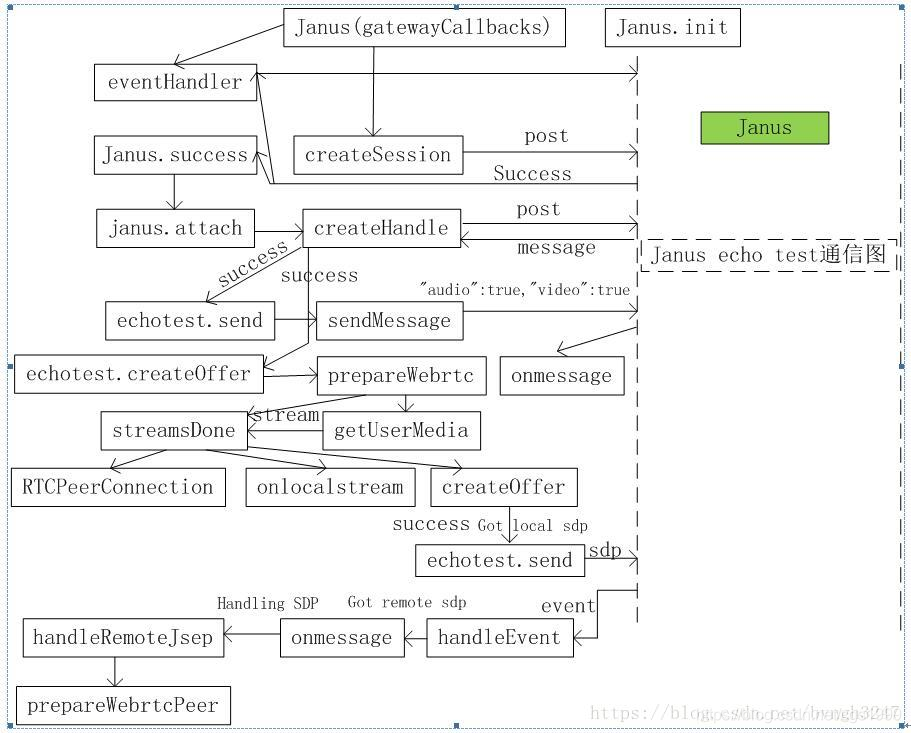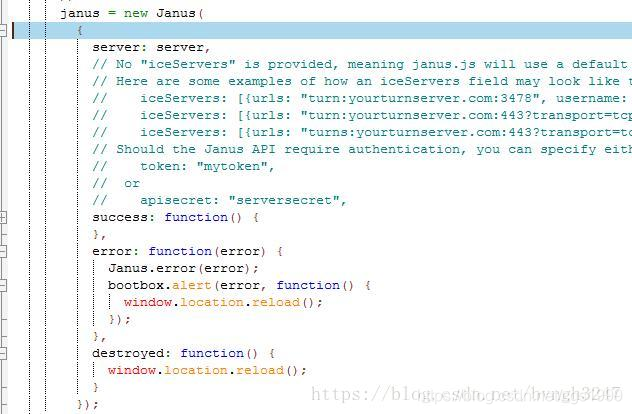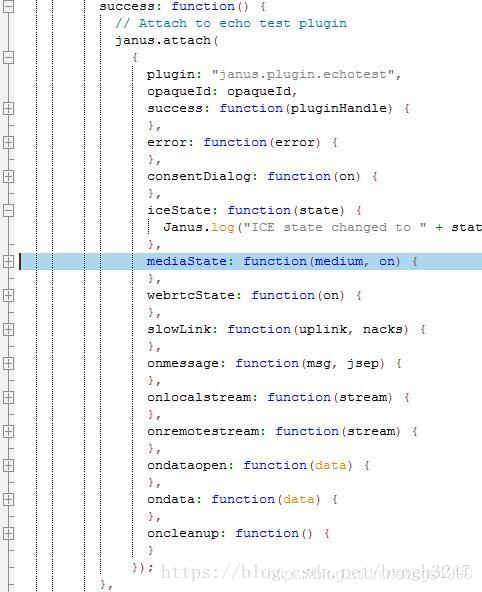1、运行效果图
Echo测试演示的是发送给服务器网关的音频和视频,服务器会回传给你,效果如下图所示:

2、代码分析
2.1 代码结构

2.2 源码分析
2.2.1 创建线程
在janus = new Janus()时,调用Janus(gatewayCallbacks)在其中有函数createSession,并且传入下面的回调函数:

createSession创建请求,成功建立一次httpAPICall,输出Created handle: 1747107217737787
Janus.httpAPICall(server, {
verb: 'POST',
withCredentials: withCredentials,
body: request,
success: function(json) {
Janus.debug(json);
if(json["janus"] !== "success") {
Janus.error("Ooops: " + json["error"].code + " " + json["error"].reason); // FIXME
callbacks.error(json["error"].reason);
return;
}
Janus.sessions[sessionId] = that;
eventHandler();
callbacks.success();
},
成功回调eventHandler以及echoest的sucesss
2.2.2 创建插件
echoest的sucesss函数如下:
定义了插值对象及对应的回调函数。
janus.attach(
{
......
}
this.attach = function(callbacks) {
createHandle(callbacks)}
实际调用createHandle,并把对应的回调plugin,succecss等传入,如下图。

在函数function createHandle(callbacks) 中,定义了插件的各个函数,并且回调echotest.js中的janus.attach中的success函数,并且输出Plugin attached! (janus.plugin.echotest, id=1747107217737787),其函数的主要作用是传入对应的回调函数,并且定义一个插件及其许多许应的函数,并且与服务器进行通信:
pluginHandles[handleId] = pluginHandle;
callbacks.success(pluginHandle);
echotest = pluginHandle;定义为插件,其中定义许多函数。包括:
var pluginHandle =
{
session : that,
plugin : plugin,
id : handleId,
token : handleToken,
detached : false,
webrtcStuff : {
}
getId : function() {
return handleId; },
getPlugin : function() {
return plugin; }




 最低0.47元/天 解锁文章
最低0.47元/天 解锁文章
















 536
536

 被折叠的 条评论
为什么被折叠?
被折叠的 条评论
为什么被折叠?








